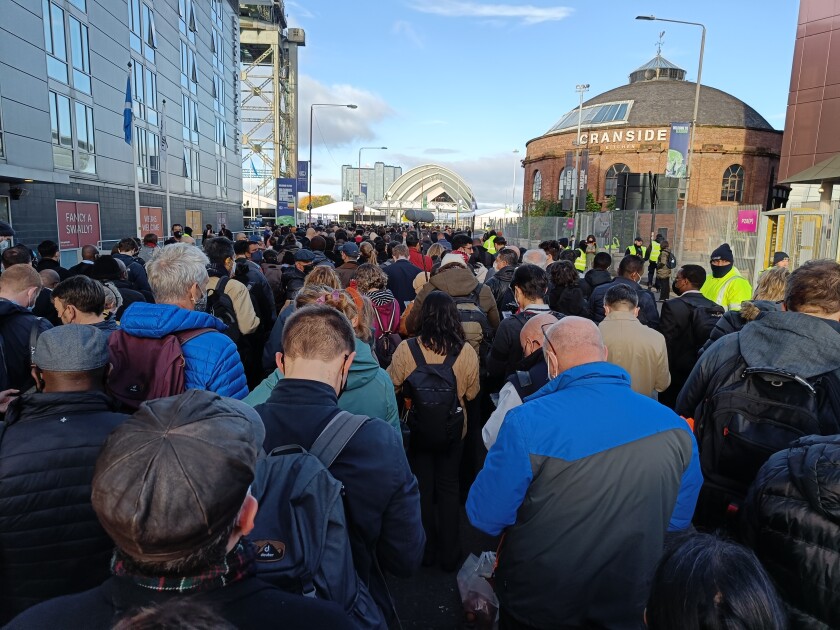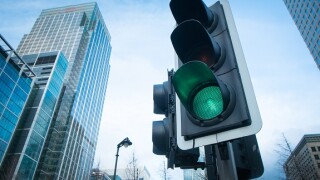Organising a global conference on the scale of COP26 is a colossal logistical challenge almost on the scale of that required to avert the worst case climate emergency scenario. Let us hope, as a species, we don’t spend as long waiting around as the COP attendees.
“This was already getting old on the first day. A couple of days in, it’s getting really frustrating,” said one disgruntled observer, one hour into what would be a 90 minute wait to be processed by the COP campus security.
For veterans of the IMF’s annual meetings in DC and around the world, the waits feel particularly galling. But then, it would be a missed opportunity if the UK presidency did not take the opportunity to exhibit that most British of specialities: queueing.
All over the campus, observers and journalists are comparing what time they began queueing and how long they waited, swapping strategies and tips on just what is required to get fast-tracked through the fabled VIP access point.
Even getting on to the campus proved a challenge on Monday. The arrival of the heads of states’ huge motorcades (let’s hope they were electric) meant the establishment of a sterile zone (sterile, here meaning that no one could go in or out, not that it was germ-free, although this too was likely an aim).
What this meant in practice was that several key miles of Glasgow thoroughfare were closed off, making the mission of actually reaching the venue a somewhat painful exercise. The barriers were lined by thousands of friendly, but ill-informed police officers from all over the UK, cheerfully directing lines of confused journalists and observers to walk four miles in order to get to the other side of the road, where access to the venue could be obtained.
Painless precautions
It’s tempting to excuse these waits by pointing out the extra layers of caution required by the Covid pandemic. But while these no doubt added to the difficulty of organising the event, on the ground, the precautions feel relatively painless.
A simple flash of a registered negative lateral flow test result at the gate is all that’s required. And, of course, the ubiquitous masks.
Other than that, the conference itself feels much as such events typically do. A riot of languages, displays and lanyards. The huge globe hovering ominously over the main hall is a spectacular reminder of the point of the exercise, but scarcely outshines the beautifully designed pavilions of the participating organisations.
Within the campus, the atmosphere is buzzing. A sense of urgency and optimism pervades the meetings, with speakers trying to express their hope that the problems, though serious, are not without solutions and that the ideas being discussed at this conference will make a difference.
One notable absence, other than the Queen’s, is the traditional conference swag. Likely precluded by the environmental considerations of supplying several metric tonnes of labelled plastic conference toys, the only free gifts are provided by Dettol, and are limited to wet wipes and hand sanitiser.
Perhaps to drive home some point about energy scarcity, the battle for unused power sockets is in danger of becoming the cause of a major diplomatic incident.





